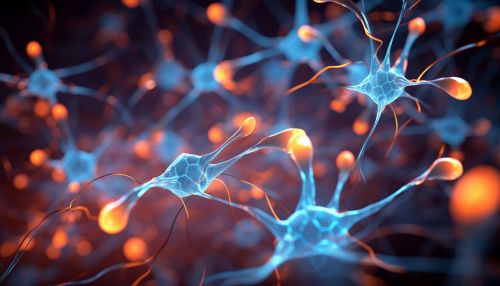The Chemistry of Biogenic Amine Signaling in the Brain
Introduction
Biogenic amines are organic, nitrogen-containing compounds that play a crucial role in the functioning of the nervous system. They are involved in various physiological processes, including the regulation of mood, sleep, and appetite. In the brain, these compounds function as neurotransmitters, chemical messengers that transmit signals across a neuron to a target cell. This article delves into the chemistry of biogenic amine signaling in the brain, providing a detailed and comprehensive understanding of this complex process.


Biogenic Amines: An Overview
Biogenic amines are derived from amino acids and include compounds such as dopamine, serotonin, and norepinephrine. These amines are synthesized in the brain and stored in synaptic vesicles within neurons. Upon receiving a signal, the neuron releases these amines into the synaptic cleft, the space between neurons, where they bind to specific receptors on the postsynaptic neuron, triggering a response.
Synthesis and Metabolism of Biogenic Amines
The synthesis of biogenic amines begins with the uptake of amino acids into the neuron. For example, the synthesis of dopamine and norepinephrine begins with the uptake of the amino acid tyrosine, while the synthesis of serotonin begins with the uptake of tryptophan. These amino acids are then converted into biogenic amines through a series of enzymatic reactions.
Once released into the synaptic cleft, biogenic amines can be taken back up into the neuron through a process known as reuptake, or they can be metabolized by enzymes. The balance between reuptake and metabolism determines the concentration of biogenic amines in the synaptic cleft and thus the intensity of the signal transmitted to the postsynaptic neuron.
Role of Biogenic Amines in Brain Function
Biogenic amines play a crucial role in various aspects of brain function. Dopamine, for example, is involved in the regulation of movement, motivation, and reward. Serotonin is implicated in mood regulation, appetite, and sleep, while norepinephrine is involved in attention and arousal.
Disruptions in biogenic amine signaling can lead to various neurological and psychiatric disorders. For example, a deficiency in dopamine is associated with Parkinson's disease, while an excess of dopamine is implicated in schizophrenia. Similarly, alterations in serotonin signaling are associated with depression and anxiety disorders.
Conclusion
The chemistry of biogenic amine signaling in the brain is a complex process that involves the synthesis, release, and metabolism of these compounds. Understanding this process is crucial for understanding brain function and the pathophysiology of various neurological and psychiatric disorders.
